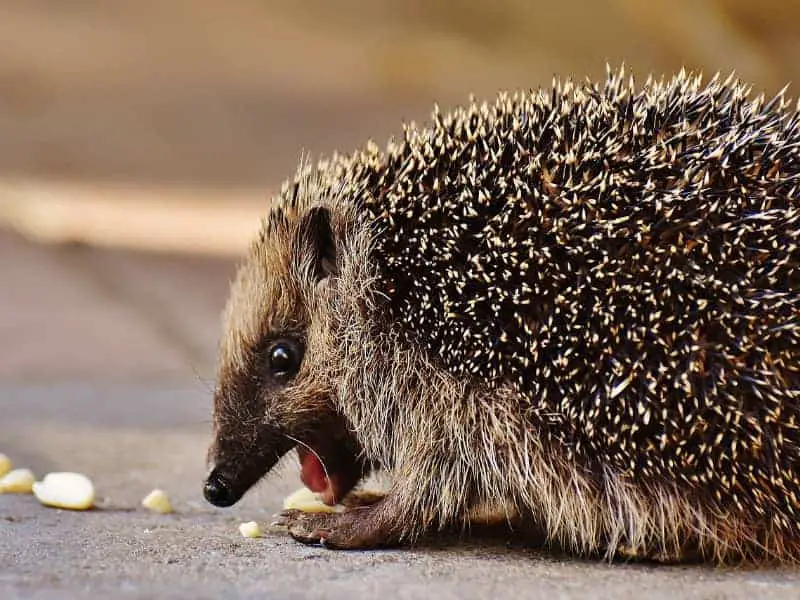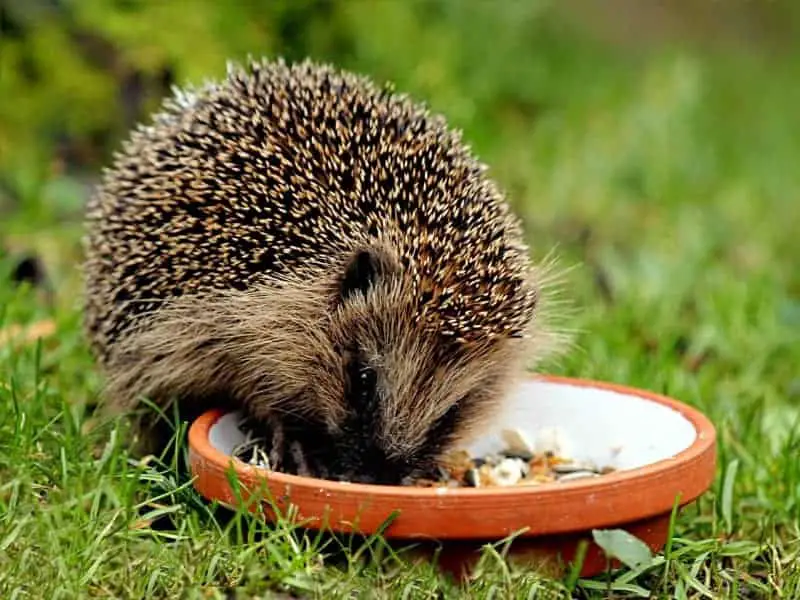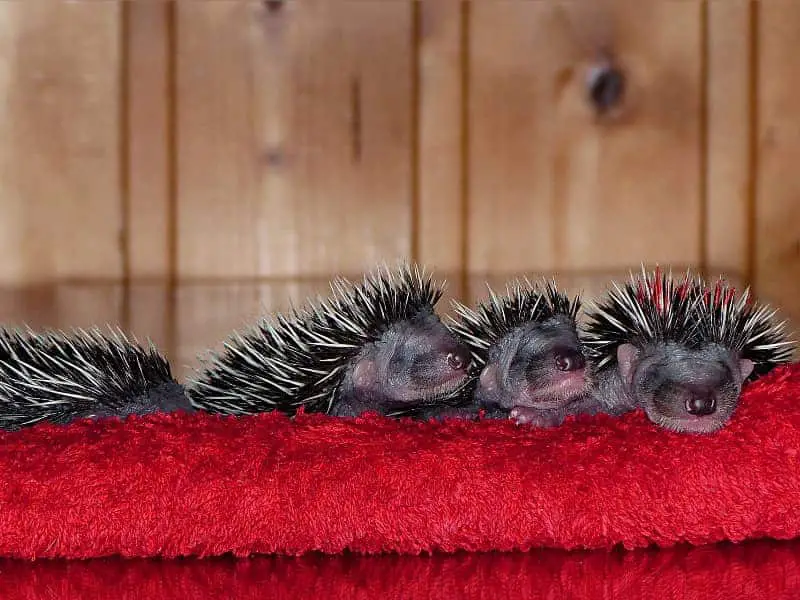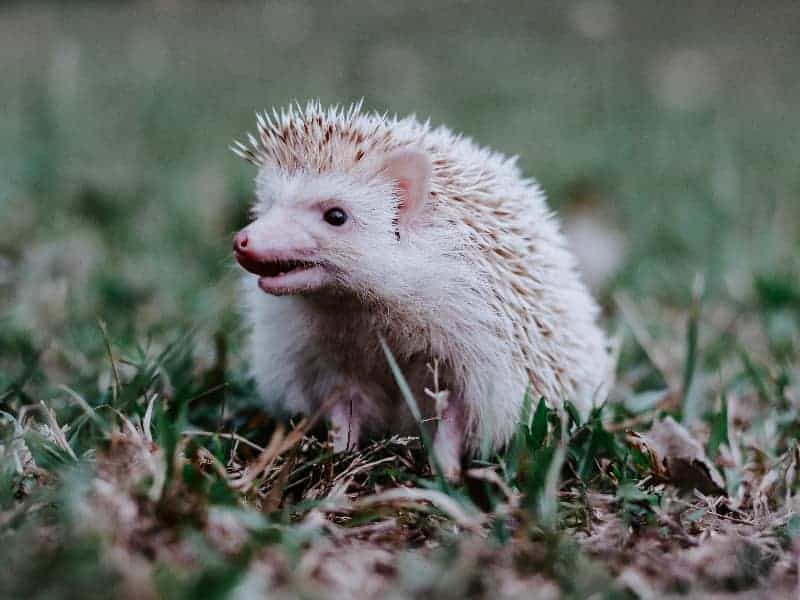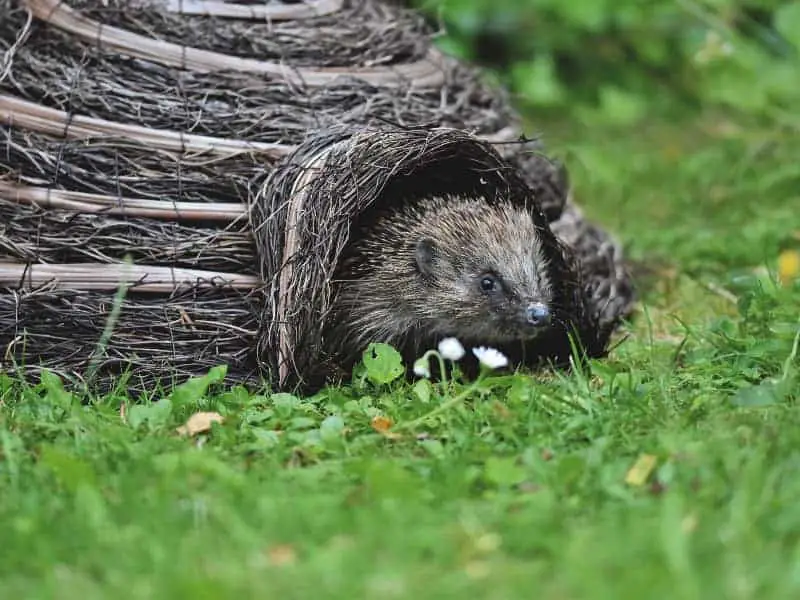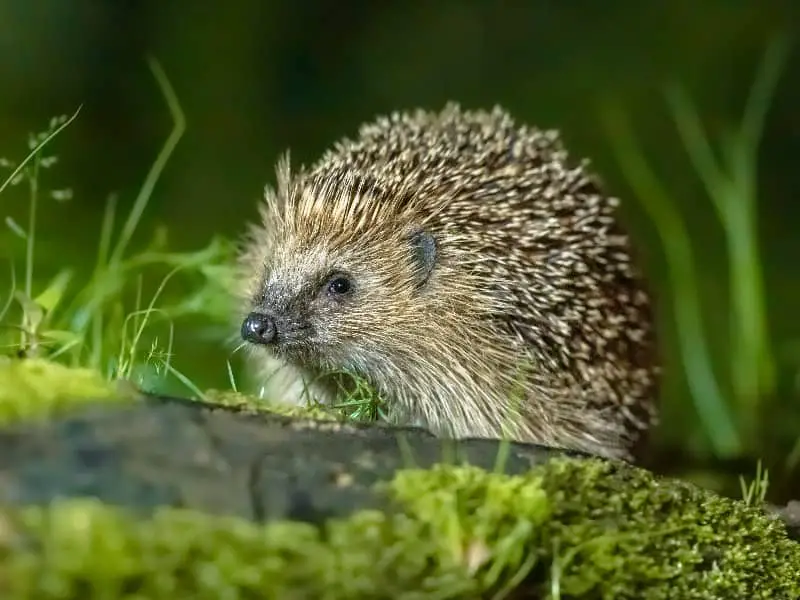
How big is a hedgehog?
How big is a hedgehog? This question may seem trivial at first glance, but it opens the door to a fascinating world that goes far beyond the spiny appearance of the little animal. In this blog post, we go on a journey of discovery and illuminate the topic of hedgehog size from different perspectives.
- How big is a hedgehog?
- How big is a hedgehog? Why this topic?
- Basics of the biology of the hedgehog
- Size variations within hedgehog species
- Growth stages of the hedgehog
- Sex-specific size differences in hedgehogs
- Seasonal size in hedgehog
- Influence of diet on the size
- Conclusion: How big is a hedgehog?
- FAQ: How big is a hedgehog?
- What is the size of an average adult hedgehog?
- Are there sex-specific size differences in hedgehogs?
- How big is a hedgehog cub?
- Does the size of the hedgehog change with the seasons?
- Does the diet affect the size of the hedgehog?
- What happens when a hedgehog is malnourished?
- What is the maximum size of hedgehogs?
- Are all hedgehog species the same size?
How big is a hedgehog? Why this topic?
The hedgehog is one of the best known and at the same time most mysterious animals that populate our gardens and forests. With its spiny exterior and its idiosyncratic way of life, it has fascinated people for generations. Although he often lives in close proximity to humans, he remains a mystery to be explored.
The hedgehog is not only interesting because of its characteristic appearance. He also plays an important role in the ecosystem, because as an insectivore he contributes to natural pest control. Its unique survival strategies, such as hibernation, make it a remarkable representative of the native fauna.
Why is its size relevant?
The size of a hedgehog has far-reaching implications for its survival and lifestyle. It affects, among other things, its locomotion, its diet, and even its ability to protect itself from predators.
For example, a larger hedgehog has the advantage of getting food more easily, while a smaller hedgehog can hide better. In addition, size plays a role in choosing a mate and defending its own territory. It is also an indicator of the hedgehog's general health and can provide signs of disease or malnutrition.
Overview of the content of the blogpost
In the following sections we will look at the various factors that influence the size of a hedgehog. From biological basics to human influences, we will get a comprehensive picture of this exciting topic. We will introduce different hedgehog species and their respective sizes, look at the development of hedgehogs from birth to adulthood and also consider the influence of the seasons and diet.
Basics of the biology of the hedgehog
Before we turn to the specific factors that influence the size of a hedgehog, we should take a look at the biological basics. After all, these lay the foundation for our understanding of the complex world of this fascinating animal.
Anatomy
The hedgehog's anatomy is unique and perfectly adapted to its way of life. Its best-known feature is, of course, its spiny coat, which consists of about 5,000 to 7,000 spines. These spines not only serve as a defense against predators, but are also an important criterion in determining the size of a hedgehog.
An adult hedgehog has a body length of about 20 to 30 cm and a weight of about 700 to 1200 grams. However, this varies depending on the species, age and sex. An interesting aspect is that the spines themselves have no influence on the weight of the hedgehog, as they are hollow and filled with air.
Distribution area
The habitat of a hedgehog can also influence its size. In Europe, the brown-bellied hedgehog is most common, while the white-bellied hedgehog is native to Africa. The different distribution areas and climatic conditions affect the body size and weight of the animals.
Hedgehogs are found in a variety of habitats, from forests and meadows to urban areas. Their adaptability is also evident in their size: in warmer areas hedgehogs tend to be smaller, while in colder regions they are often larger and stronger.
Way of life
The hedgehog's way of life is closely linked to its size. A nocturnal animal that feeds primarily on insects, it must meet certain physical requirements. For example, it must be able to run fast to catch prey, but also compact enough to curl up in case of danger.
A larger hedgehog can eat more food and therefore has a better chance of survival in times of food shortage. However, its size also makes it more vulnerable to predators and limits the places where it can hide.
Size variations within hedgehog species
There are different hedgehog species, each with their own characteristic sizes and features. This diversity opens up interesting comparisons and insights.
European Brown Breasted Hedgehog
The European brown-breasted hedgehog is probably the best known hedgehog in our latitudes. Its body size varies, but is usually in the range of 20 to 30 cm, with a weight of 700 to 1200 grams. Unlike other species, it is less adapted to extreme climatic conditions and therefore shows less size variance.
This hedgehog is primarily native to Western Europe and has even spread to urban areas. Proximity to humans and the associated diet may also have an influence on its size.
African White-bellied Hedgehog
The African White-bellied Hedgehog, as the name suggests, is found mainly on the African continent. It is usually smaller than the European Brown-bellied Hedgehog, with a body length of about 15 to 25 cm and a weight of around 300 to 700 grams.
Its smaller size can be interpreted as an adaptation to the warmer climate and other environmental conditions. Interestingly, this hedgehog species is also popular as a pet, which in turn may have an influence on its average size.
Long-eared hedgehog
The long-eared hedgehog is another interesting hedgehog species that occurs primarily in parts of Asia and the Middle East. With its relatively long ears and slimmer stature, it is quite different from the two previously described species.
It has a body length of about 16 to 26 cm and a weight of 400 to 1100 grams. Its longer ears are a striking feature and have no direct influence on its size, but give information about its adaptability and way of life.
Growth stages of the hedgehog
The size of a hedgehog is not static, but goes through different stages during its life. From birth to adulthood and beyond, there are several stages, each with its own characteristics.
When young
Hedgehogs are born as small, helpless creatures. They weigh only about 10 to 25 grams and are blind as well as deaf. During the first weeks of life, they experience rapid growth. During this phase, proper nutrition is crucial as it affects not only physical but also cognitive development.
As a rule, young hedgehogs reach a weight of 200 to 400 grams and open their eyes after about 6 to 8 weeks. At this stage, they begin to explore their environment and start eating solid food. However, their size can vary greatly depending on factors such as diet, health and genetic conditions.
As an adult animal
A hedgehog is considered fully grown as soon as he has completed his first year of life. At this stage, it has usually reached its maximum size. However, there may still be minor changes, primarily depending on living conditions such as food supply and climatic conditions.
Adult brown-breasted hedgehogs in Europe usually measure between 20 and 30 cm and weigh 700 to 1200 grams. As explained in previous sections, these values can vary depending on species and distribution range.
Age-related size changes
With age, hedgehogs may also experience changes in size and weight. Generally, they do not increase in size as they age, but may lose weight. Reduction in body mass with age is often a sign of health problems or lack of nutrition.
It is also possible that older Hedgehog due to the loss of teeth or have difficulty eating due to illness, which can negatively affect their height and weight.
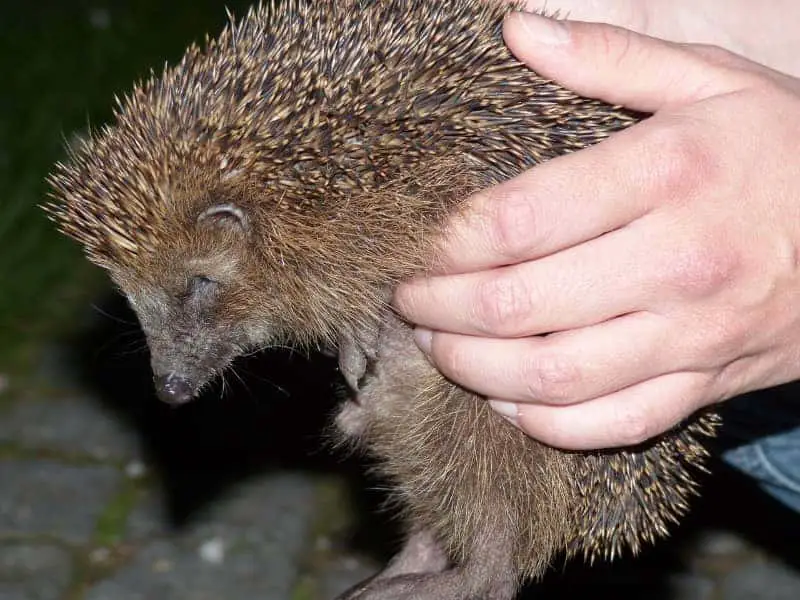
Sex-specific size differences in hedgehogs
The size of a hedgehog can also be influenced by its sex. This has not only biological, but also behavioral implications that show up in different aspects of the hedgehog's life.
Male hedgehogs
Male hedgehogs are usually larger and heavier than their female counterparts. This is mainly an advantage during the mating season, as a larger build can be helpful when competing with other males. There are exceptions, however, and size alone is not the only factor influencing mating behavior.
The size of a male hedgehog can also be influenced by other factors such as diet, age, and health status. However, male hedgehogs tend to move farther away from their birthplace, which in turn can affect their diet and consequently their size.
Female hedgehogs
Female hedgehogs are usually smaller than males, though the size difference is not always significant. In some species, the difference is barely noticeable. The smaller size of females does not directly affect their ability to bear or raise offspring.
However, the size of a female can affect her success in raising young. A larger female usually has more fat reserves and can thus nurse and care for her young more effectively.
Influence of size on mating behavior
Size also plays a role in hedgehog mating behavior. Larger males often have an advantage because they are able to control a larger territory and thus have access to more females. However, size is not the only factor involved. For example, smaller males can score points for other qualities such as speed or cunning.
Females do not necessarily select mates based on size, but also consider other factors such as health and behavior. In some cases, however, size can be an indication of good genes, which in turn increases the likelihood of a successful litter.
Seasonal size in hedgehog
Seasons have a significant influence on the size and weight of hedgehogs. These changes are to be understood as adaptations to the respective climatic conditions and food supply.
Winter weight gain
In the fall, hedgehogs begin to prepare for hibernation. To survive the cold months, they actively gain weight. This weight gain is essential for survival during hibernation, as the hedgehog draws on its fat reserves during this time.
An adult hedgehog can reach a weight of up to 1.5 kg before hibernation, depending on the species and living conditions. However, it is important to note that excessive weight gain can also pose health risks, such as an increased risk of cardiovascular disease.
Summer figure
After hibernation, which can vary in length depending on the region and weather conditions, hedgehogs usually weigh considerably less. They have used up their fat reserves during hibernation and now have to actively search for food again.
At Summer lay hedgehog do not necessarily gain weight, but rather maintain a constant height and weight. Their diet is more varied, and they are more active, as evidenced by a leaner build. At this time of year, the weight of an adult hedgehog is usually around 700 to 1,200 grams.
Influence of diet on the size
Diet plays a critical role in the size and overall well-being of a hedgehog. There are several factors that can affect diet and therefore size, including natural food, feeding by humans, and malnutrition.
Natural food
Hedgehogs are omnivores in nature, with their diet consisting mainly of insects, worms and other small animals. These food sources are rich in proteins and nutrients that are essential for the hedgehog's growth and development. A balanced natural food supply generally ensures the animal's optimal size and healthy weight.
However, the quality of the natural diet can be affected by several factors, including habitat and season. A lack of high quality food can have a negative effect on the size and weight of the hedgehog.
Feeding by man
In urban and rural areas where the hedgehog's natural habitat is restricted by human activities, human feeding can have an impact on the size of the animal. Although well-intentioned, feeding hedgehogs with inappropriate foods such as bread and milk can lead to health problems and abnormal growth.
If you are going to feed a hedgehog, it is advisable to offer special hedgehog food or suitable natural food such as insects and worms to promote healthy development.
Malnutrition and its effects
Malnutrition can have serious effects on a hedgehog's size and health. A lack of essential nutrients and vitamins can lead to impaired growth, weak immune systems, and various diseases. In extreme cases, malnutrition can even be fatal.
Conclusion: How big is a hedgehog?
The size of a hedgehog is affected by a number of factors that can vary from the species of hedgehog, its age, sex, time of year, and even its diet. While there are general guidelines for hedgehog size, it is important to recognize that these animals can reach different sizes in different habitats and conditions.
Whether it is growth stages, sex differences in size, seasonal changes in size, or the importance of diet, the size of a hedgehog is an interesting indicator of its lifestyle and biological needs. However, it is important that this information is not considered in isolation, but in the context of the animal's particular living conditions and individual health status.
Last but not least, it should be remembered that each hedgehog is an individual and its size can change during its life. Therefore, it is important to give these charming and useful animals the respect and care they deserve.
The conclusion rounds out the discussion on "How big is a hedgehog?" and provides a comprehensive overview of the various factors that affect the size of these fascinating animals
FAQ: How big is a hedgehog?
What is the size of an average adult hedgehog?
An average adult hedgehog has a length of about 20 to 30 cm and a weight of about 700 to 1,200 grams.
Are there sex-specific size differences in hedgehogs?
Yes, male hedgehogs tend to be slightly larger and heavier than female hedgehogs.
How big is a hedgehog cub?
Hedgehog young are tiny at birth, weighing only about 10-25 grams. However, they grow quickly and reach a weight of 250-350 g within six weeks.
Does the size of the hedgehog change with the seasons?
Yes, hedgehogs often gain weight in preparation for hibernation. After hibernation, they are usually lighter.
Does the diet affect the size of the hedgehog?
Definitely. A balanced diet, rich in proteins and nutrients, promotes the growth and health of the hedgehog.
What happens when a hedgehog is malnourished?
Malnutrition can lead to stunted growth, a weak immune system and other health problems.
What is the maximum size of hedgehogs?
Maximum size varies by species, but some adult hedgehogs can weigh up to 1.5 kg, especially when preparing for hibernation.
Are all hedgehog species the same size?
No, there are different species of hedgehogs, and their size can vary. The European brown-bellied hedgehog is about larger than the African white-bellied hedgehog.
Author

-
Garden animal - A life with nature
Welcome to my animal blog! My name is Dirk and I am happy to take you on my journey through the fascinating world of animals and gardening.
Born 54 years ago, I have had an insatiable curiosity for the animal world around me since childhood. Although I have moved professionally in other industries, my true passion has always been animals and nature. It is remarkable how a small garden has become such an important part of my life.
Many of my fondest memories are associated with the animals that share our home. Whether it's the curious squirrels that scurry across the trees in the morning, the colorful variety of birds that visit our feeders, or the busy bees and butterflies that pollinate our flowers, every moment with them is invaluable to me.
This blog is my contribution to share my experiences, discoveries and insights with like-minded people. Here I will share stories of unforgettable encounters with animals, give tips on gardening and creating wildlife-friendly habitats, and take you on my journeys through nature.
Thank you so much for being here!
Cordial,
Dirk aka garden animal
Last posts
- 27. February 2024PetsVeganes Hundefutter – Grün und Gesund?
- 18. January 2024ChickensOregano für Hühner
- November 27, 2023HamsterDiurnal hamsters
- November 24, 2023HamsterHamster hammock

